How to anticipate negative costs
BACKGROUND ON THE EUROPEAN ELECTRICITY MARKET
There is no single electricity market within the European Union, but rather a market in each member state, coupled with that of neighboring states. This coupling is done through the interconnections of the European electricity transmission network, whose capacities are fixed due to their technical design. As long as the interconnections between two states are not saturated, there is no price difference between the two states.
Electricity is bought and sold on a wholesale market offering different products that correspond to different delivery dates and durations. Spot products, which are delivered the next day of the same day, are distinguished from term products whose delivery is set at a more remote date with delivery durations ranging from one week to several years.
Term products are standardized products, for example the delivery of 1 MWh of electricity in base or peak. The prices of term products are the average of the anticipated spot prices over the considered period. Spot products are, for the day-ahead, hourly products, with delivery the next day. For example, the purchase of a 1 MWh production for one hour between 8am and 9am, delivered the next day. For the intraday maturity, these are half-hourly, hourly or blocks of several hours products, which can be exchanged on the same day, up to 5 minutes before delivery.
The spot price of electricity in France is set daily through an auction organized by EPEXSpot exchange. Participants can submit buy and sell offers until noon, and the resulting equilibrium price is calculated taking into account the supply and demand for electricity as well as cross-border capacity exchanges. The spot price fluctuates depending on the availability of production and can be negative in the case of non-storable renewable electricity overproduction. In this case, consumers can receive money for using electricity, and producers can be forced to pay to get rid of the excess. They are therefore encouraged not to produce when prices are negative.
It is through this mechanism that the different electricity markets aim to balance the network so that electricity production always remains equal to consumption.
WEBDYN SOLUTION: HOW TO ANTICIPATE NEGATIVE ELECTRICITY PRICES
Every day at 1 pm, the electricity prices are known for each hour of the following day. This makes it possible for a photovoltaic solar energy producer to anticipate and cut its production at these time slots.
The WebdynSunPM is monitoring and control gateway for photovoltaic power plants. It has a software overlay that allows the equipment on site to be controlled. This can be the inverters, whose power can be regulated or which can be stopped on command. A common application is to connect the WebdynSunPM’s relay output to a motorized circuit breaker that can cut off injection into the network.
Using a partner monitoring platform (for example, S4E’s EnergySoft platform), electricity prices can be retrieved online and the information to open or close the relay output can be given by POST request as shown in the example code below.
Device: WebdynSunPM, industrial gateway for Solar Energy
Platform: any solar energy platform
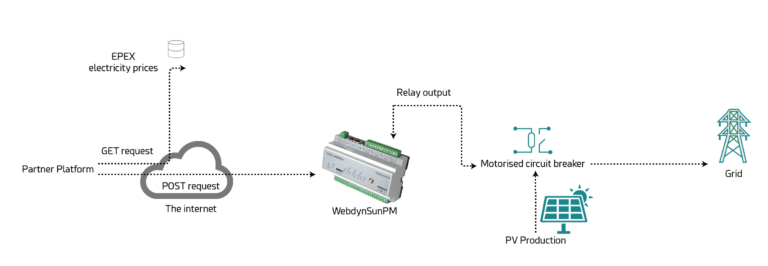
For this architecture to work, the WebdynSunPM gateway must have a permanent connection with the partner platform. This is possible either through a particular mobile phone operator that provides a public IP address and a VPN, or by installing the gateway behind a router in the photovoltaic power plant’s information system.
EXAMPLE OF CODE
Below is an example of a Python script to close the WebdynSunPM relay output. After retrieving the gateway identification cookie, the SetState function of the test_relay script has its state variable written to 0 to close the relay.
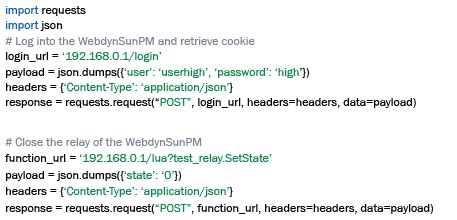
BENEFITS
The use of this technology allows electricity producers to anticipate negative electricity prices and, consequently, to optimize production and reduce their impact on the network. The proposed solution, based on WebdynSunPM, is easy to install and configure, and allows producers to act quickly and efficiently. The immmediate benefits are time and money savings, as well as reduced impact on the network.



 Enter the “ethernet” or “modem” connection type:
Enter the “ethernet” or “modem” connection type:
 For an ethernet configuration, make sure the IP parameters are compatible with server access according to the concentrator local network configuration. For an ethernet connection, the configuration must be compatible with the concentrator’s local network topology so that it can access the servers. This configuration is done from the “Networks” configuration page (see section 3.2.2.3: “Networks”).
For a modem connection, the modem configuration must be correct before a connection can be set up. This configuration is done from the “Modem” configuration page (see section 3.2.2.4: “Modem”).
The parameters for the servers to be configured are at least the following:
For an ethernet configuration, make sure the IP parameters are compatible with server access according to the concentrator local network configuration. For an ethernet connection, the configuration must be compatible with the concentrator’s local network topology so that it can access the servers. This configuration is done from the “Networks” configuration page (see section 3.2.2.3: “Networks”).
For a modem connection, the modem configuration must be correct before a connection can be set up. This configuration is done from the “Modem” configuration page (see section 3.2.2.4: “Modem”).
The parameters for the servers to be configured are at least the following:
 Therefore the following fields need to be configured: “Interface”, “Type”, “Server type”, “Address”, “Port”, “Login” and “Password”.
The other fields can be left at the default values subject to the directories having been properly created beforehand. See section 3.1.2: “Configuration files” for more details.
Therefore the following fields need to be configured: “Interface”, “Type”, “Server type”, “Address”, “Port”, “Login” and “Password”.
The other fields can be left at the default values subject to the directories having been properly created beforehand. See section 3.1.2: “Configuration files” for more details.




 Wait. The concentrator will reboot using its factory configuration.
Wait. The concentrator will reboot using its factory configuration.







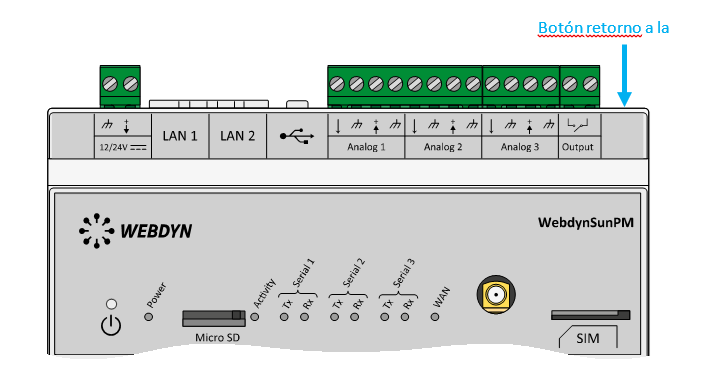 Esperar. El concentrador arrancará con su configuración de fábrica.
Esperar. El concentrador arrancará con su configuración de fábrica.


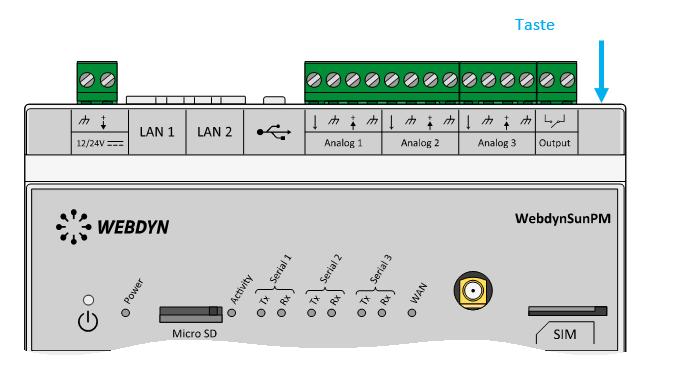 Warten Sie. Der Hub startet nach ein paar Augenblicken mit der Werkseinstellung neu.
Warten Sie. Der Hub startet nach ein paar Augenblicken mit der Werkseinstellung neu.









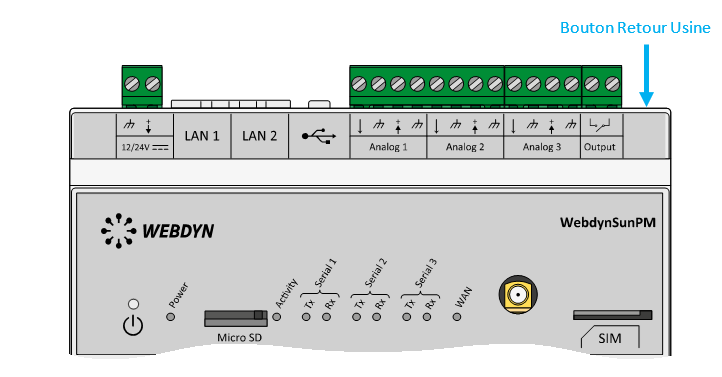 Attendre. Le concentrateur va redémarrer avec sa configuration usine.
Attendre. Le concentrateur va redémarrer avec sa configuration usine.
